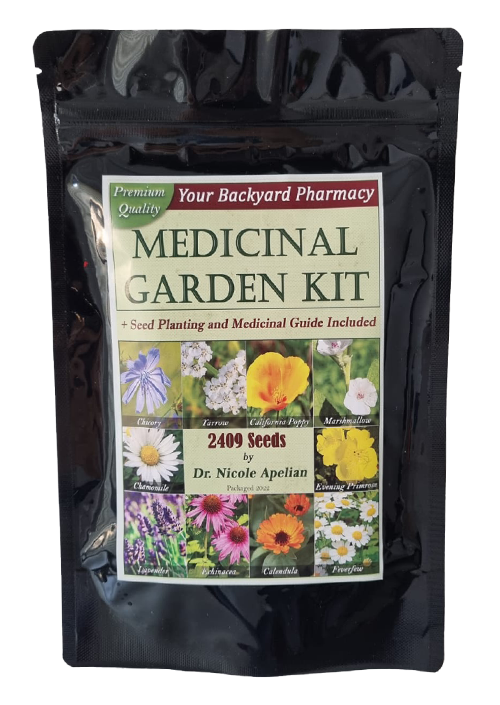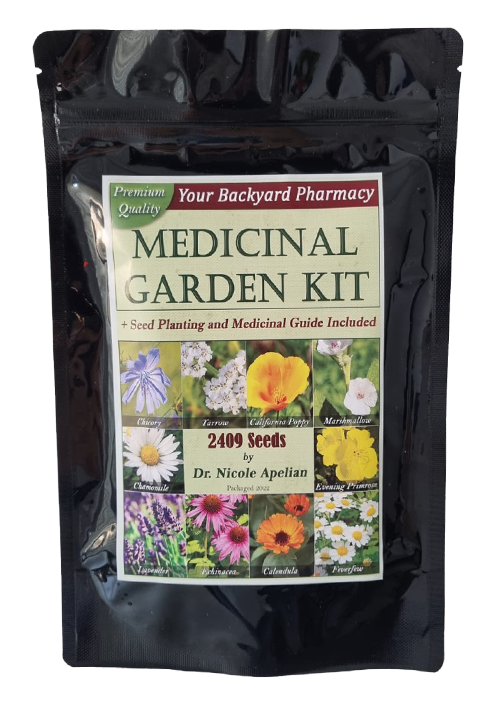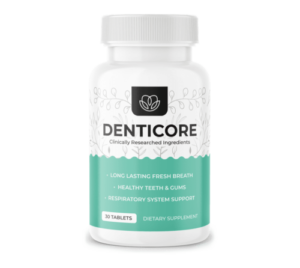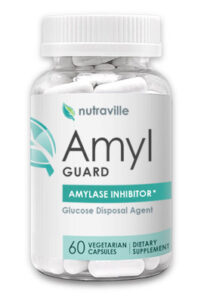Grow Your Own Natural Remedies at Home
Medicinal Garden Kit In today’s world, where many are turning towards natural and holistic health practices, medicinal plants have become a popular and effective way to promote wellness. The medicinal garden kit offers a unique and convenient way to grow your own healing herbs, right from the comfort of your home. Whether you’re an experienced gardener or a beginner, a medicinal garden kit provides all the tools and resources you need to cultivate a variety of plants that can support your health in a natural, sustainable way.
In this article, we will explore the benefits of growing medicinal plants, the types of herbs commonly found in a medicinal garden kit, and how these plants can be used to promote better health and well-being.
What is a Medicinal Garden Kit?
A medicinal garden kit is a complete package designed to help individuals grow herbs and plants that have therapeutic properties. These kits typically include a selection of seeds for medicinal herbs, soil, containers, instructions, and sometimes additional tools to help you start your garden. Some kits may also provide educational resources about how to grow, harvest, and use the plants for medicinal purposes.
The beauty of a medicinal garden kit is that it allows you to cultivate natural remedies right at home. Whether you’re interested in treating common ailments, boosting your immune system, or simply exploring the world of herbal medicine, a medicinal garden kit can provide you with the tools to get started.
Why Grow Medicinal Herbs?
There are many reasons why people are turning to medicinal herbs to support their health. Here are just a few of the top benefits of growing your own medicinal garden:
- Control Over What You Grow
One of the main advantages of growing your own medicinal herbs is that you have complete control over how they are grown. You can ensure that your plants are grown without harmful pesticides, synthetic chemicals, or other harmful additives, making them safer for use. This gives you peace of mind knowing that the herbs you are consuming or using in your remedies are pure and free from unwanted contaminants. - Cost-Effective
Purchasing medicinal herbs from stores or online can get expensive, especially if you rely on them frequently. Growing your own herbs allows you to save money in the long run. Plus, most medicinal herbs are easy to grow, requiring minimal investment in terms of time and money. Once your plants are established, you can enjoy a continuous supply of fresh herbs. - Convenience
Having medicinal herbs readily available in your home means that you don’t have to wait for a store visit or delivery to access your remedies. You can easily harvest fresh herbs whenever you need them. This is especially useful when dealing with common ailments such as digestive issues, colds, or skin irritations. - Healing Power of Nature
Nature has provided us with an abundance of plants that can help heal and maintain our health. From boosting immunity to calming inflammation, medicinal herbs are packed with bioactive compounds that have been used for centuries in traditional healing practices. Growing these plants at home gives you direct access to these healing powers, allowing you to harness their benefits whenever you need them. Main Page - A Therapeutic Hobby
Gardening itself is known to have therapeutic benefits, including stress reduction and improved mental health. By tending to your medicinal garden, you not only grow plants that support your physical health, but you also engage in a hobby that can promote emotional and mental well-being. Gardening helps you reconnect with nature, spend time outdoors, and engage in mindful activities.
Common Herbs Found in Medicinal Garden Kits
Most medicinal garden kits include a variety of plants that can help address common health concerns. Here are some of the most popular herbs commonly found in these kits:
- Lavender (Lavandula angustifolia)
Lavender is well-known for its calming properties. It is often used to reduce anxiety, promote better sleep, and relieve headaches. Lavender can be used in essential oil form, as a tea, or added to bathwater for relaxation. Growing lavender at home ensures you have a continuous supply of this soothing herb. - Chamomile (Matricaria chamomilla)
Chamomile is another calming herb that is often used as a tea to aid sleep and digestion. It can also be applied topically to soothe skin irritations. Chamomile has anti-inflammatory properties and is known for its gentle, soothing effects on the body. - Peppermint (Mentha × piperita)
Peppermint is a versatile herb used to treat digestive issues, relieve headaches, and provide a cooling sensation to irritated skin. It is also known for its refreshing scent. Growing peppermint at home is easy, and the plant can be used in teas, tinctures, or even as an ingredient in homemade skincare products. - Echinacea (Echinacea purpurea)
Echinacea is commonly used to boost the immune system and fight off colds and infections. It can be made into teas, tinctures, or capsules to help prevent illness or reduce the severity of cold symptoms. Echinacea is also known for its anti-inflammatory and antioxidant properties. - Basil (Ocimum basilicum)
While basil is commonly used in cooking, it also has medicinal properties. It is known for its ability to reduce stress and improve digestion. Basil can also be used as a natural remedy for respiratory issues and can promote overall vitality. - Lemon Balm (Melissa officinalis)
Lemon balm is a member of the mint family and is often used to reduce stress, anxiety, and insomnia. It has a refreshing lemon scent and can be used in teas or tinctures. Lemon balm also has antiviral properties, making it helpful in treating cold sores and other viral infections. - Thyme (Thymus vulgaris)
Thyme is a powerful antimicrobial herb that can be used to treat respiratory infections, sore throats, and coughs. It is also useful for improving digestion and relieving menstrual cramps. Thyme is a hardy herb that thrives in various growing conditions. - St. John’s Wort (Hypericum perforatum)
St. John’s Wort is commonly used to treat mild to moderate depression, anxiety, and insomnia. It can also be used as an anti-inflammatory and is effective for treating wounds or burns. This herb is often used in teas, oils, and tinctures.
How to Use Your Medicinal Herbs
Once your medicinal herbs have grown and are ready to harvest, it’s time to put them to use. Here are some common ways you can incorporate your herbs into your health regimen:
- Herbal Teas
Many medicinal herbs can be made into teas. Simply steep the leaves, flowers, or stems in hot water to extract their beneficial compounds. Herbs like chamomile, peppermint, and lemon balm make wonderful calming teas. - Tinctures
Tinctures are concentrated herbal extracts made by soaking plant material in alcohol or vinegar. This method is ideal for herbs like echinacea, St. John’s wort, and lavender, which can be consumed in small amounts for therapeutic benefits. - Topical Applications
Some herbs, such as lavender and calendula, can be used topically in the form of oils, creams, or poultices. These are perfect for soothing skin irritations, wounds, or aches. - Aromatherapy
Essential oils derived from medicinal plants like lavender, peppermint, and lemon balm can be diffused in your home or applied to your skin (with proper dilution) to promote relaxation, relieve stress, or alleviate headaches. - Capsules or Tablets
If you prefer a more convenient option, many medicinal herbs can be consumed in capsule or tablet form. These are available in health stores or can be made at home using dried herbs.





